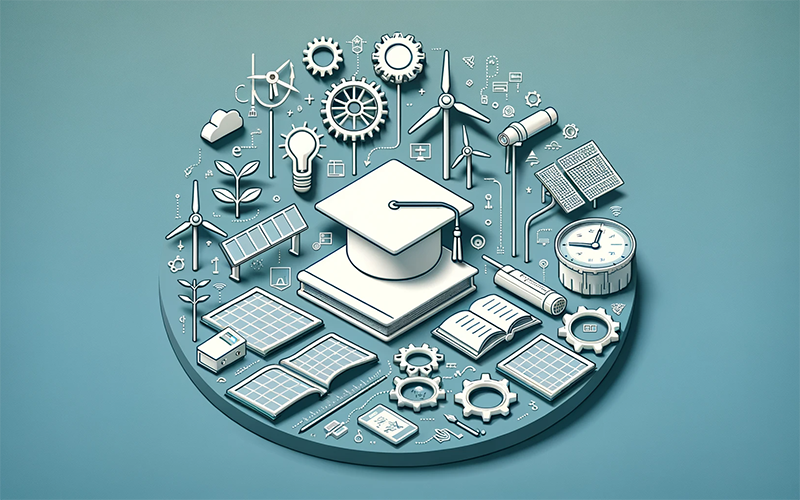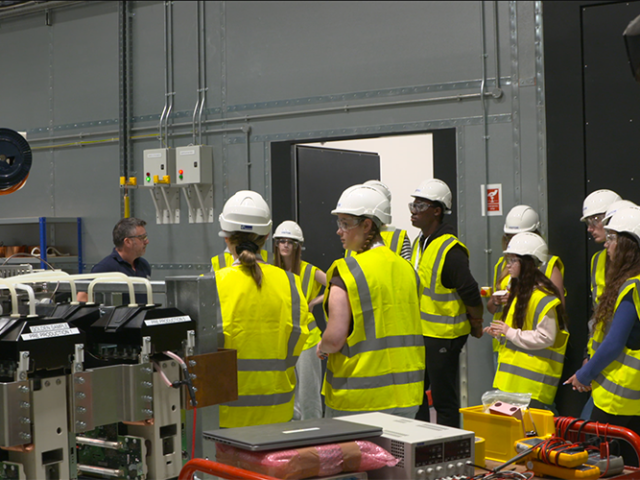In an era where sustainable energy solutions are imperative, engineering education is pivotal in cultivating the next generation of innovators and problem solvers. The integration of renewable energy into engineering curriculums is not just an academic evolution; it’s a response to the global call for environmental stewardship and sustainable development.
Expanding horizons in traditional engineering disciplines
The landscape of engineering education is being reshaped with a strong emphasis on renewable energy. Each discipline is tailoring its approach to incorporate this crucial element.
Electrical engineering and renewable energy: Electrical engineering courses are now embedding solar and wind power technologies into their core. Students explore the design and functionality of photovoltaic cells, understanding how sunlight is converted into electricity. They also delve into wind energy, learning about the aerodynamics of wind turbines and the electrical systems that harness and distribute this energy. For example, a university in Germany offers a module where students build and test a small-scale wind turbine, learning about blade design and energy conversion in a hands-on environment.
Mechanical engineering’s role in sustainable energy: Mechanical engineering students are exploring the mechanics behind renewable energy systems. Courses focus on the design of wind turbine blades, the engineering of hydroelectric power plants, and the thermal aspects of solar energy. These students often engage in projects such as designing a turbine blade prototype, providing them with practical experience in materials selection and aerodynamic efficiency.
Civil engineering and infrastructure for renewables: Civil engineering students are learning to design and construct sustainable infrastructure for renewable energy. This includes studying the environmental impact of large-scale solar farms, the structural integrity of wind turbines, and the water management of hydroelectric plants. For instance, a civil engineering course in the Netherlands involves a project on designing a sustainable water power system, considering aspects like environmental impact, cost-effectiveness, and long-term sustainability.
Innovative learning through real-world projects
Practical, hands-on projects are essential in translating theoretical knowledge into real-world applications. These projects range from campus-based initiatives to collaborations with industry partners.
Campus-based renewable energy projects: Some universities are turning their campuses into living labs for renewable energy. Students are involved in projects like installing solar panels on campus buildings or designing a small-scale wind power solution for on-campus energy needs. This hands-on approach not only enhances learning but also contributes to the university’s sustainability goals.
Collaborations with the renewable energy sector: Partnerships with industry leaders in renewable energy provide students with exposure to the latest technologies and practices. For example, a university in the United States partners with a solar energy company to offer internships where students work on real-time solar energy projects, from planning to implementation.
Preparing for a sustainable career in engineering
As the world leans more towards renewable energy, the demand for skilled engineers in this field is skyrocketing. Engineering courses are not just preparing students for jobs but are shaping them into future leaders in sustainability. Graduates are entering the workforce with a robust understanding of renewable technologies, ready to contribute to a greener future.
Conclusion
The comprehensive integration of renewable energy into engineering education is more than an academic shift; it’s a commitment to a sustainable future. By equipping students across various disciplines with knowledge and practical skills in renewable energy, educational institutions are laying the groundwork for innovative solutions to the world’s energy challenges. This approach is preparing a new generation of engineers who are technically adept and environmentally conscious, poised to lead the charge in sustainable development.




